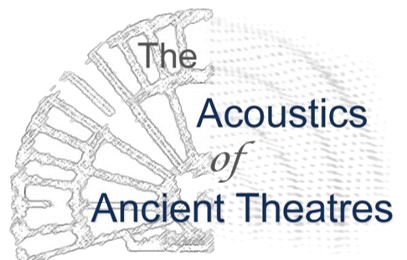
The Acoustics of Ancient Theatres
International Symposium
Verona - Italy, 6 to 8 July 2022
The Loggia Cornaro (1524) as a bridge between the ancient and the modern theatre
Dario D'Orazio , Giulia Fratoni
DOI: https://doi.org/10.58874/SAAT.2022.206
Abstract:In ancient open-air Roman theatres, the scaenae frons increases the directivity of the sound source to better
convey the actors’ speech to the audience. Since such an acoustic effect is closely related to the presence of architectural
elements such as awnings and columns, specific insights are needed for each case. The present work concerns
the acoustics of the Loggia Cornaro in Padua (Italy), an outstanding example of Renaissance columned
portico (1524) with a well-preserved Roman-style scaenae frons intended to host open-air theatre performances.
Acoustic measurements were performed in the Loggia and the adjacent forecourt according to ISO 3382 -1. In
addition, a numerical model of this hybrid indoor-outdoor site was developed and tuned till the match with the
measurements’ outcomes. Bayesian multi-decay analyses determined the actual influence of the scenery on sound
propagation throughout the audience area. The main results prove that the Loggia not only increases the sound
source level but also leads to different multi-slope sound energy decays depending on the sound sources’ location,
which are typical traits of modern indoor theatres.
Keywords:open-air theatres, acoustic simulations, multi-decay analysis, cultural heritage
Pages:48-51
Paper:![]()